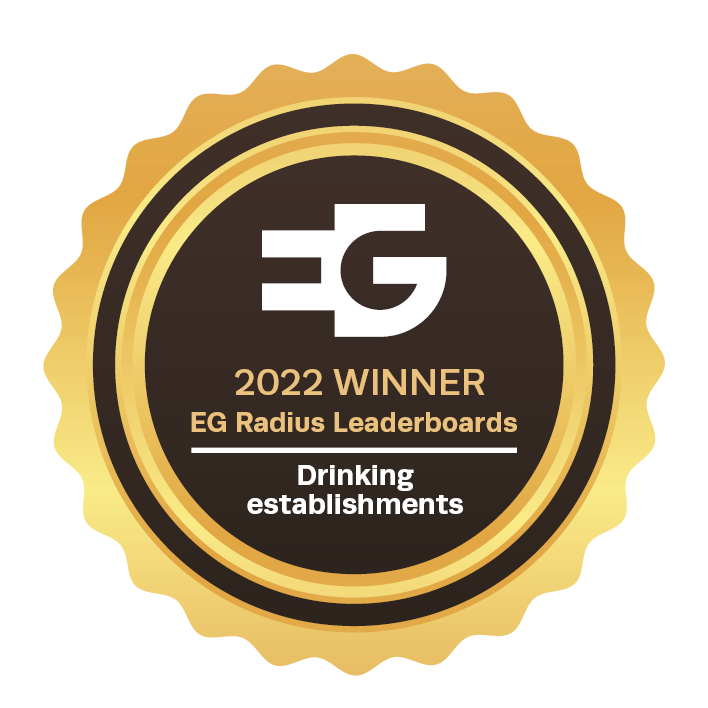







01/12/2012
Click here to open the pdf directly.
Introduction
Welcome to Fleurets annual Statistics and Analysis of the sale price of public houses.
Market activity has continued to be dominated by the sale of bottom end freehold pubs with relatively little genuine market activity in respect of the sale of operational and profitable units on a freehold or a leasehold basis. From analysis of our transactions however, there have been some subtle changes to the market place on a national and on a north/
south basis.
Basis of statistics
This is a review of the deals actually concluded by Fleurets in the 12 month period to the 30th September 2012. It is not an analysis of the movement in market value for a fixed set of properties, as the deals included are different every year. It partly provides an indication
of the movement in value but also reflects the quantity and quality of properties that have been transacted in the year. The commentary provided on the market activity in each of the three sections should be considered properly to fully understand the meaning behind the
statistics provided.
The breakdown of the data includes a split on a north/south basis where 'Northern UK' includes deals from our Leeds, Manchester and Birmingham offices and 'Southern UK' includes deals from our London, Brighton, Bristol and Sudbury offices.
Our statistics are divided into three categories
Bottom End Freeholds
These are properties generally sold without accounts, sometimes closed or vandalised or if operational under a temporary tenancy/ management arrangement. These are primarily pub company sales but also include administration sales and occasional private sales.
Invariably they reflect some form of forced sale situation.
Leaseholds
This group covers a wide spectrum of properties including high street bars, community locals and destination food houses. The tied and free of tie deals, either on assignment, letting or
underletting. Some deals reflect a negative value due to reverse premiums being paid or sub-lettings at a lower rent than the passing rent.
Freehold Freehouses
These are generally better quality pubs sold with the benefit of accounts. Operational and viable pubs, usually sold by private individuals but also by managed house operators and significantly not in a distressed situation.
Overview - Bottom End Freeholds
This type of bottom end freehold transaction, i.e. without accounts and invariably in a 'forced sale' scenario, has continued to dominate market activity. Overall volume is down by a third compared to 2011 but these sales still account for two-thirds of all public house transactions with a larger proportion (58%) being undertaken in the north (down from 66%
in 2011).
The average sale price has increased by 16% nationally, split +18% in the north and +8% in the south. This reflects the improved quality of operations coming to the market (particularly in the north). This is demonstrated by the higher level of fair maintainable trade (FMT), which is up 11.3% on last year as a result of pub companies having largely sold off the worst of their estates over the last three years or so. The average sale price is slightly reduced from the average for just Pub Co sales, due to the effect of lower quality sites coming to the market through administration situations.
The number of pubs being sold out of the trade continues, but at a slower rate, with 48% of bottom end freehold pubs being sold for alternative use compared to 54% last year and 50% in 2010. The most common alternative use is residential conversion, with 52% of pubs sold out of the trade being for residential use, 14% for restaurant, 14% for retail and 4% each for convenience stores and offices.
Buyers of these properties have largely been individuals for continued operation, conversion to alternative uses or development. There are a small but notable number of sites being sold to regional brewers and regional/ local multiples, such as Amber Taverns and Bold Pub Company in the north.
The year ahead
As with all sale based statistics, there is a degree of inbuilt time lag in the figures reported. Many of the deals included in these statistics were completed 6 - 12 months ago. What we are seeing in the present market is slightly different to what we saw 12 months ago.
We anticipate a continuation of the bottom end sales program by the pub companies, albeit at lower numbers. These will be supplemented by disposals via administration situations. Average sale prices are likely to continue to increase as the supply side of the market slows and the average quality of the properties coming to the market increases.
We anticipate that the number of properties being sold for alternative use will continue to decline as the operations coming to the market increase in their viability for continued pub operation.
Overview - Leaseholds
The leasehold assignment, subletting and lettings market has continued to experience difficult conditions. The average sale price has declined by -15% nationally and this is split -18% in the north and -5% in the south. These transactions have been made up of a wide range of operations including tied and free of tie lettings, tied and free of tie assignments and free of tie
underlettings. The results are therefore, a reflection of the wider transactional market for leasehold public houses as opposed to providing any specific indication about a change in value of any particular element of the market.
It should be noted that the transactional evidence excludes a package deal of 15 free of tie leasehold properties and a significant reverse premium transaction in the north of England, as these were considered to be non-representative of market activity in general.
Leasehold transactions in the south, despite showing a 5% decline in the average sale price, probably reflect stronger market conditions than last year as the 2011 comparables included two significant high value leasehold assignments in London, which have not been repeated in 2012. This is confirmed by volume numbers, which demonstrate that the transactions in the south accounted for 61% of overall leasehold public house deals. The leasehold market in the north has mainly comprised of subletting at Nil Premiums and new lettings. Assignment premiums do happen but they have been few and far between.
The year ahead
There continues to be significant availability of new leases on the market, both on a tied and free of tie basis. The majority of new lettings from the pub companies appear to be on a tenancy arrangement as opposed to a longer term lease, however, the flexibility now provided by many of these agreements, with more affordable ingoings and rents, are satisfying a good
proportion of the demand. Premiums will therefore continue to be under pressure and apart from the best properties in the best locations, significant premiums are unlikely to be seen on a regular basis.
Attractive pubs in countryside areas and economically strong regions where there is no historic over supply of pubs, such as the south east, will lead the way and will see any increase in value that is likely to occur. Average sale prices in the north will continue to represent little more than fixtures and fittings value.
Overview - Freehouses
The freehouse market has continued to be relatively inactive. Owners of operational and viable public house businesses, whether corporate or private, have invariably elected to continue to own/operate the business rather than sell. The relatively low sale prices achievable are partly a result of the difficulty in arranging finance and particularly the level of cash investment required by potential purchasers.
Sales in the year to September 2012 reflected a 17% increase in the average sale price mainly generated by an increase in the multiple of fair maintainable trade (FMT) as apposed to an increase in the estimated trading potential of the business. This suggests that it is not a case of
better quality operations coming to the market but it is more a case of an increase in the value attributable to a site by purchasers.
There is a significant north/south movement in the sales statistics. In the north the average sale price has fallen -9% although this is largely correcting the anomaly in 2011 brought about by a select few high value sales last year. In the south there has been a significant increase in the average sale price (+47%) although this is exaggerated by a number of high value sales for
alternative use in the London area. The movement is therefore slightly exaggerated but the trend is supported by a wider base of transactions. The south of England has seen a significant increase in the volume of activity with two-thirds of freehouse sales being achieved in the southern half of the country. Overall transactions have doubled in volume terms over the last 12 months, albeit from a low base.
The year ahead
We anticipate seeing a continued increase in the volume of transactions being led by the south of England as confidence in trading potential and acceptance of values by vendors becomes more prevalent. Transactions will be driven by private vendors who have increased in number over the last three years due to the Pub Company sell off. We are however, already seeing signs that corporate operators are considering the time to be right for the disposal of managed house operations and we anticipate that administrators and banks holding on to distressed assets as operational entities will start to realise their positions and push properties on to the
market in open market sales (as opposed to forced sale situations).
Click here to open the pdf directly.
Further information or queries about the contents of this survey should be directed to
Simon Hall, Director and Head of Pubs
E. simon.hall@fleurets.com